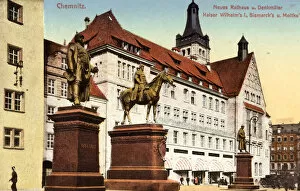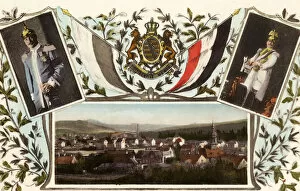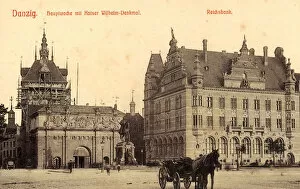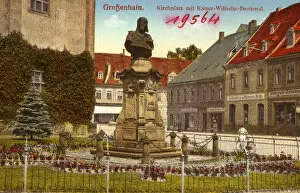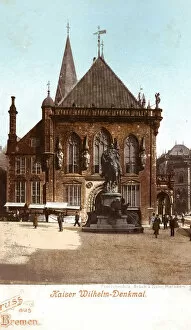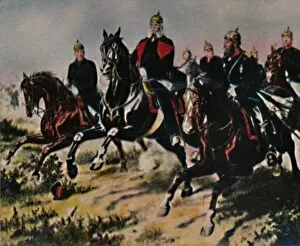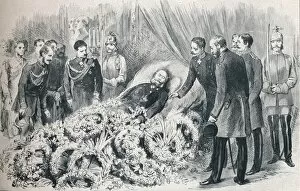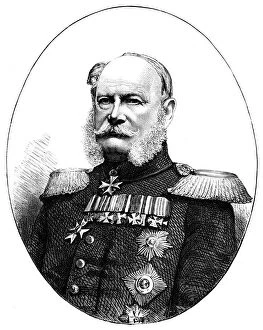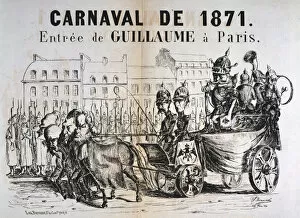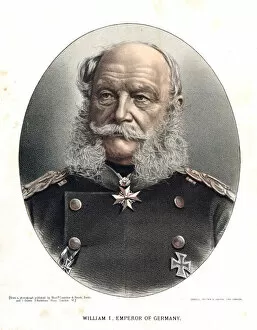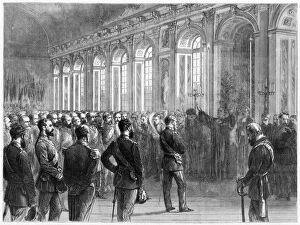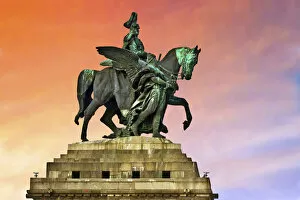Wilhelm I Collection (#4)
Wilhelm I, the iconic figure behind the Proclamation of the German Empire at Versailles on 18 January 1871, was a towering presence in European history
For sale as Licensed Images
Choose your image, Select your licence and Download the media
Wilhelm I, the iconic figure behind the Proclamation of the German Empire at Versailles on 18 January 1871, was a towering presence in European history. Known as "Le grand ogre allemand" or "King Wilhelm eats the German small states, " he played a pivotal role in shaping Germany's destiny. The image astride his horse, immortalized in the Monument for the Foundation of the German Empire, symbolizes his power and authority. His reign was not without challenges; an engraving depicting Dr Nobiling's attempted assassination highlights how even emperors are vulnerable to acts of violence. One defining moment during Wilhelm I's rule was undoubtedly the Franco-Prussian War of 1870. A color lithograph capturing this conflict showcases his strategic prowess and determination to unify Germany under Prussian leadership. Despite facing opposition from some quarters, there were those who celebrated Wilhelm I's reign. An illustration from H. E. Marshall's A History of Germany depicts jubilant supporters exclaiming "Long Live his Imperial Majesty Emperor William I. " This colorful lithograph reflects public sentiment towards their revered leader. Before ascending to imperial glory, Wilhelm I had already made significant contributions as King of Prussia. An engraving portrays him crowning himself in Konigsberg's Chapel of the Teutonic Order—a symbolic act that solidified his position within Prussia and set him on a path towards unification. Beyond politics and warfare, it is worth noting that Wilhelm I had diverse interests. As evidenced by a wine can bearing his name from Zürich in 1746—likely named after him—he appreciated fine beverages and perhaps enjoyed indulging himself occasionally. Various portraits capture different facets of Wilhelm I's persona: Lyon presents us with an intimate portrait showcasing both regality and vulnerability while Richard Bong captures Prince William (as he was known earlier) with youthful charm back in 1835. L.


